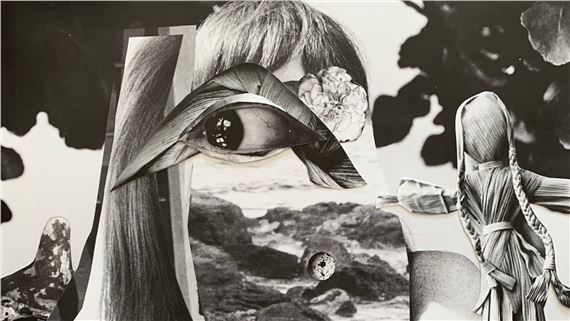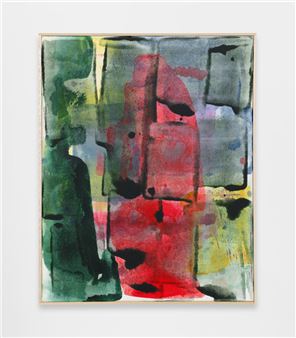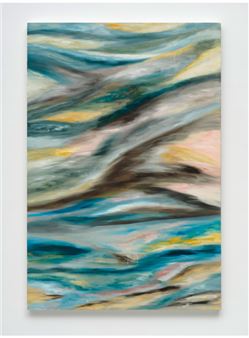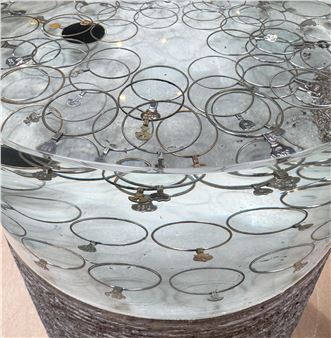���ܱ�ñ��
���ܱ�ñ�� brings together over 20 Latinx artists to explore the legacy of Magical Realism in our present moment.
Despite their European origins, Surrealism and Magical Realism feature prominently in the history of Latin America. A cultural movement and a literary and artistic style, respectively, both grapple with the notion of the real—challenging how we think about the worldly and otherworldly. They found their way across the Atlantic with artists, writers, and intellectuals fleeing a war-torn continent and eventually evolved significantly in the Americas. Their similarities have encouraged a narrative that often positions them as a single genre seeped in the wondrous. Their differences however, are not as nuanced as they seem, and when considered, reveal two very distinct legacies.
After WWI, Surrealists in Europe sought to revolutionize the human experience by challenging reason and the systems that structured how people lived. Inspired by the potential of the unconscious, they made works that championed the irrational and unexpected. Melting clocks, sky-filled eyes, and lobster telephones joined the repertoire of fantastical images, objects, texts, and sounds that emerged to negate the world as it was in order to envision a new one altogether. Magical Realists, on the other hand, didn’t ponder other worlds—they confronted the absurdities of the one they inhabited.
Popularized in Latin America through literature, Magical Realism grew beyond a style to become a kind of language. Those who engaged with it wrote stories and made artworks that treated the fantastical as part of the ordinary. What appeared estranged and magical in their work was not a depiction of an alternative realm but rather a view into the lives endured by those unlike us. Those invested in Magical Realism rejected the Western idea of a singular reality and instead portrayed the conditions that shaped their worlds even if to some they seemed extraordinary and unreal. Collectively, their legacy shed light on the fact that a multiplicity of realities can exist at once.

Recommended for you
���ܱ�ñ�� brings together over 20 Latinx artists to explore the legacy of Magical Realism in our present moment.
Despite their European origins, Surrealism and Magical Realism feature prominently in the history of Latin America. A cultural movement and a literary and artistic style, respectively, both grapple with the notion of the real—challenging how we think about the worldly and otherworldly. They found their way across the Atlantic with artists, writers, and intellectuals fleeing a war-torn continent and eventually evolved significantly in the Americas. Their similarities have encouraged a narrative that often positions them as a single genre seeped in the wondrous. Their differences however, are not as nuanced as they seem, and when considered, reveal two very distinct legacies.
After WWI, Surrealists in Europe sought to revolutionize the human experience by challenging reason and the systems that structured how people lived. Inspired by the potential of the unconscious, they made works that championed the irrational and unexpected. Melting clocks, sky-filled eyes, and lobster telephones joined the repertoire of fantastical images, objects, texts, and sounds that emerged to negate the world as it was in order to envision a new one altogether. Magical Realists, on the other hand, didn’t ponder other worlds—they confronted the absurdities of the one they inhabited.
Popularized in Latin America through literature, Magical Realism grew beyond a style to become a kind of language. Those who engaged with it wrote stories and made artworks that treated the fantastical as part of the ordinary. What appeared estranged and magical in their work was not a depiction of an alternative realm but rather a view into the lives endured by those unlike us. Those invested in Magical Realism rejected the Western idea of a singular reality and instead portrayed the conditions that shaped their worlds even if to some they seemed extraordinary and unreal. Collectively, their legacy shed light on the fact that a multiplicity of realities can exist at once.
Artists on show
- Alfonso Gonzales Jr
- Amina Cruz
- Bianca Nemelc
- Bony Ramirez
- Danie Cansino
- Daniel Arthur Mendoza
- Daniel Gibson
- Diana Yesenia Alvarado
- Eduardo Sarabia
- Elizabeth Ibarra
- Erick Hernandez
- Fay Ray
- Hely O. Gonzalez
- Jackie Castillo
- John Flores
- Josie Del Castillo
- Kathia St. Hilaire
- Ken Taylor Reynaga
- Luis Flores
- Marcel Pardo Ariza
- Maria A. Guzman Capron
- Ofelia Marquez Huitzil
- Patrick Martinez
- Ryan Flores
- Star Montana
- Veronica Fernandez
Contact details


 ARTISTS
ARTISTS















